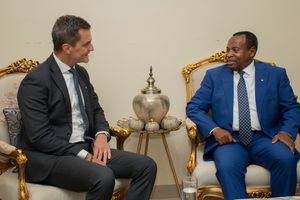How Sh972 billion will improve higher education in Tanzania

What you need to know:
- Tanzania’s higher learning needs revamp for it to become efficient and effectively contribute to the country’s development through proper production of competent graduates
Dar es Salaam. Challenges that have hit higher education institutions for long in Tanzania, including declining enrollment, outdated teaching methods and skills mismatch among graduates, are likely to end if the implementation of the $425-million (over Sh972 billion) project by World Bank will go as intended, it has been stated.
The five-year Higher Education for Economic Transformation (HEET) project is currently underway following the recent signing of agreements between the Ministry of Education and the heads of public universities.
The project that was officially signed between the WB and the government in May 2021, has been eagerly awaited by its beneficiaries since 2016 amid financial setbacks, but experts now say a revolution in higher education will only be seen if implementation takes place as per plans. “The higher education sector has faced many challenges for a long time, especially the infrastructure question at a time when students seeking university admission have been increasing. It is time now to use this opportunity to quench this thirst,” said Dr Michael Nyella, an education analyst.
According to the WB, Tanzania has seen a decrease in enrolments in recent years but the annual demand for university education is expected to rise to more than half a million students by 2030. And about 80 percent of the funding (project) will be used to boost admissions and to improve the quality of teaching in universities.
The ongoing expansion of the country’s advanced secondary education, with a current gross enrolment ratio of seven percent, again puts pressure on the tertiary education system to admit more students.
According to the government’s predictions, the demand for higher education is expected to surge to at least 482,000 places by 2030 and, in this case, the WB saw, there was an urgent need for expansion of university education to accommodate the growth.
Tanzania’s tertiary gross enrolment rate of 3.1 percent is one of the lowest in Eastern Africa and lags behind Kenya’s 11.5 percent, Ethiopia’s 8.1 percent, Rwanda’s 6.2 percent and Uganda’s 4.8 percent, according to Unesco.
Also the overall quality of post-secondary education in Tanzania is also low and does not adequately prepare university graduates for current and future formal jobs or self-employment.
“The reasons for this include a shortage of qualified lecturers. Currently, reports show that only 52 percent of academic staff members hold master’s degree and about 33 percent hold PhDs. The rest have lower qualifications. Let more lecturers be trained fully through this project,” Dr Nyella noted.
The WB noted that “many lecturers are not trained in the use of the latest technical developments and global knowledge in their fields, and use outdated, mostly lecture-based teaching methods, thus limiting the development of adequate competencies among students.”
As a result, Prof Adolf Mkenda, who the minister for education, noted that having been waiting for the project, they believe would revitalise and expand the capacity of 17 institutions to contribute to key areas for innovation, economic development, and labour market relevance.
“We need to be honest in this if we want to get more aid (there are already talks with the WB for another one), so as a ministry we will manage this with great professionalism,” he assured.
“Use this project to increase the campuses of our colleges in areas where colleges do not exist. Send lecturers to study abroad to get more experience for the future of our education,” Prof Mkenda added.
He said through the project needed to see local universities become elements of universality, saying the country could not have universities and were not recognized anywhere in the world.
“We will facilitate lecturers including our professors to attract foreign investment through research with the status of being published in major journals…,” he said.




